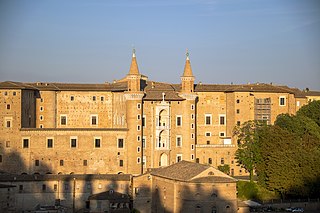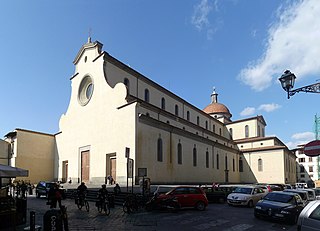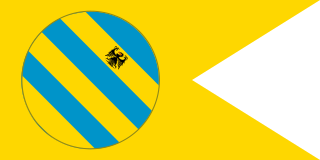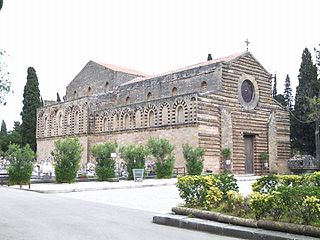
Paolo Uccello, born Paolo di Dono, was an Italian painter and mathematician who was notable for his pioneering work on visual perspective in art. In his book Lives of the Most Excellent Painters, Sculptors, and Architects, Giorgio Vasari wrote that Uccello was obsessed by his interest in perspective and would stay up all night in his study trying to grasp the exact vanishing point. Uccello used perspective to create a feeling of depth in his paintings. His best known works are the three paintings representing the battle of San Romano, which were wrongly entitled the Battle of Sant'Egidio of 1416 for a long period of time.

Filippino Lippi was an Italian Renaissance painter mostly working in Florence, Italy during the later years of the Early Renaissance and first few years of the High Renaissance. He also worked in Rome for a period from 1488, and later in the Milan area and Bologna.

Luca Signorelli was an Italian Renaissance painter from Cortona, in Tuscany, who was noted in particular for his ability as a draftsman and his use of foreshortening. His massive frescos of the Last Judgment (1499–1503) in Orvieto Cathedral are considered his masterpiece.

Girolamo Genga was an Italian painter and architect of the late Renaissance, Mannerist style.

The Ducal Palace is a Renaissance building in the Italian city of Urbino in the Marche. One of the most important monuments in Italy, it is listed as UNESCO World Heritage Site since 1998.

The Basilica di Santo Spirito is a church in Florence, Italy. Usually referred to simply as Santo Spirito, it is located in the Oltrarno quarter, facing the square with the same name. The interior of the building – internal length 97 m (318 ft) – is one of the preeminent examples of Renaissance architecture.

The Duchy of Urbino was an independent duchy in early modern central Italy, corresponding to the northern half of the modern region of Marche. It was directly annexed by the Papal States in 1631.

Giovanni Santi was an Italian painter and decorator, father of Raphael. He was born in 1435 at Colbordolo in the Duchy of Urbino. He studied under Piero della Francesca and was influenced by Fiorenzo di Lorenzo. He was court painter to the Duke of Urbino and painted several altarpieces. He died in Urbino.

Giovanni Paolo Cavagna was an Italian painter of the late-Renaissance period, active mainly in Bergamo and Brescia.

Claudio Ridolfi (1560–1644), also known as Claudio Veronese, was an Italian painter of the Renaissance period.

The Madonna with St. Catherine of Alexandria and St. Martin of Tours is a painting by the Italian Renaissance painter Filippino Lippi created c. 1485–1488. It is housed in the church of Santo Spirito of Florence. St. John the Baptist, the patron saint of Florence, appears on the right hand side of the Virgin. The infant Christ turns towards his precursor also a juvenile, dressed in animal skins as appropriate for a desert saint and whose staff has a crossbar referring to the Crucifixion to come.

The Church of the Holy Spirit is a Norman church in Palermo, Sicily, Southern Italy. The church is located within the boundaries of Sant'Orsola cemetery.

The Testament and Death of Moses is a fresco attributed to the Italian Renaissance painters Luca Signorelli and Bartolomeo della Gatta, executed in around 1482 and located in the Sistine Chapel, Rome.
Luzio Dolci or Lucio Dolce was a late 16th-century Italian painter active in Castel Durante in the Province of Pesaro and Urbino in the Region of the Marche.

The Communion of the Apostles is a painting by Italian Renaissance artist Luca Signorelli, dating from around 1512. It is now in the Diocesan Museum of Cortona, Tuscany, Italy.

The Pinacoteca Comunale ofCittà di Castello is the main museum of paintings and arts of Umbria Italian Region, alongside the Perugia's National gallery, and it's housed in a renaissance palace, generally preserved in its original form.
San Domenico is a Renaissance and Gothic style, consecrated Roman Catholic church and former monastery. It is located on the corner of Largo Monsignor Muzi and Via Luca Signorelli, and adjacent to the Piazza di San Giovanni in Campo, in the center of Città di Castello, region of Umbria, Italy.

Crucifixion is a painting of the Crucifixion of Christ, usually attributed to Perugino, with or without assistance from Luca Signorelli. The work's dating and attribution are both uncertain - Venturi and Schmarsow attribute it to a pupil of Perugino, whilst other art historians attribute it to Perugino alone or with assistance from Signorelli. The deep chiaroscuro is comparable to Signorelli's style elsewhere or to the early style of Perugino whilst he was still heavily influenced by Verrochio. The landscape background is typical of Perugino, with mountains and hills in deep perspective.

The Crucifixion with Saint Mary Magdalene is a c. 1502–1505 painting in tempera on canvas by Luca Signorelli, now in the Uffizi in Florence. It is usually held to be a late autograph work.
The Crucifixion Standard is a double-sided c.1502-1505 tempera on panel painting by Luca Signorelli, produced late in his career and now on the high altar of Sant'Antonio Abate church in Sansepolcro. The reverse shows Anthony the Great and John the Evangelist with brothers kneeling before them in hierarchical proportion, whilst the front shows the Crucifixion with Anthony, John, Mary Magdalene and the Virgin Mary.


















